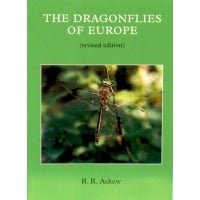Insects
Rearing and Studying Stick and Leaf Insects Paul Brock
Specifically intended for beginners, although it is also suitable for experienced Phasmid enthusiasts, it is one of the few guides to rearing that features the majority of the culture stocks available, 22 species in detail. The informative text is complemented by 8 colour plates, 14 black and white plates and 29 figures.
The Amazing World of Stick and Leaf Insects by Paul D Brock, general editor Reg Fry.
A superb comprehesive guide for all those intrigued by these groups of insects. Topics covered include structure, fascinating facts, life history and development, defence behaviour, enemies, collecting, breeding, preserving, taxonomic studies, important collections in museums etc. around the world, and elaborate stories, beliefs and poems. Also outlines the major known species around the world on a regional basis. A section on fossils is included. Includes a comprehensive glossary of the technical terms in the description and the classification of stick and leaf insects. Hardback A5, 184 pages, 46 figures, 26 black and white plates and 40 pages of colour plates (containing 83 photographs and 4 drawings/paintings of insects and their habitats,
Collins Field Guide. M.Chinery. Complete insect guide. Identification keys, making it possible to identify nearly every species of insect and learn about its biology. Softcover 60 colour plates. 320 pages. 8 x 5.25".
Britain's Dragonfles 3rd Edition, by Dave Smallshire and Andy Swash
Thoroughly updated and revised with new photographs, text and up to date distribution maps. Includes detailed easy to use identification charts for adults and larvae.
Softcover, 224 pages
Dragonflies of Europe by R R Askew.
Soft cover edition (2004 revised) covering the now 124 species of Odonata breeding in Europe.
308 pages
Field Guide to Dragonflies of Britain & Europe by Klaas-Douwe B Dijkstra and illustrated by Richard Lewington
Covering all the resident and migrant dragonflies and damselflies from the Arctic to the Sahara, with approx. 1000 illustrations.
Includes 160 detailed descriptions and newly researched maps plus a country by country guide to finding dragonflies.
Softcover, 320 pages
Field Guide to the Bees of Great Britain and Ireland by Steven Falk, illustrated by Richard Lewington.
A new long-awaited field guide to the bees of Great Britain, Ireland and the Channel Islands. llustrated with over 1000 colour and black & white artworks plus over 700 colour photographs. There are 234 up-to-date distribution maps and a comprehensive introduction to bees including field techniques for identifying and recording.
Also includes detailed texts for all 275 British and Irish species, covering field and microscopic characters, similar species, variation, flight season, habitat, flowers visited, nesting habits, status & distribution, and parasites & associates. Contains a series of innovative illustrated keys to genera and species.Softcover, 432 pages.
Bumblebees by John Feltwell.
A new book seeking to give bumblebees a higher profile and promote awareness for the insects. Over 150 colour photos with facts and figures, wildflower gardening and practical advice. Softcover, 58 pages
Honeybees by John Feltwell.
Aims to stimulate interest in honeybees as their fortunes have been under threat over the last few years. Sections include predators, honeybees in trouble, the Varroa mite and Colony Collapse Disorder.
Over 150 colour photographs and each on different wildflowers and garden flowers. Also contains reproduction prints of 19th Century beekeeping.
Insect Microscopy by Andrew Chick.
Insects, and their close relatives, the arachnids, centipedes, millipedes and woodlice, make ideal material for study by the recreational microscopist. Moreover for the entomologist, the addition of the use of the microscope to their tool kit adds a whole new dimension to their study, revealing in finest detail the appearance and structure of these tiny creatures.This book reveals the basics of insect microscopy, explaining what equipment is needed and how to get the best out of it.
Topics covered include insects and their relatives; trapping insects for study; dissection, slide mounting and publishing your work. Softcover, 128 pages
Field Guide to Spiders of Great Britain & N. Europe by Michael J Roberts.
450 species comprehensively illustrated, with 288 colour painting and over 1500 drawings.
Provides general information on the structure and biology of spiders, together with illustrations of genitalia, webs and egg sacs.
Drawing and Painting Insects by Andrew Tyzack
An inspiring guide to help capture the beauty of insects by understanding their structure, behaviour, movement, colour and habitat.
Superbly illustrated with examples and insights from leading artists.
Softcover, 192 pages.












